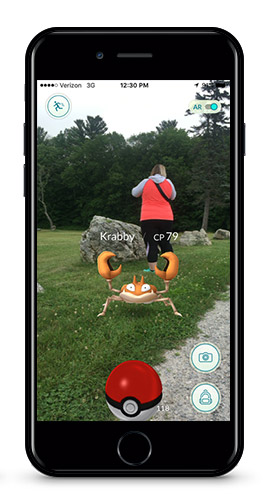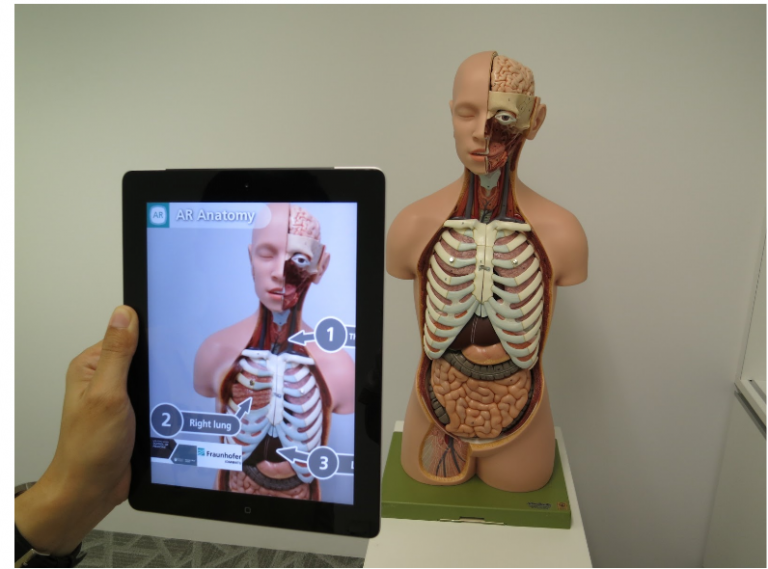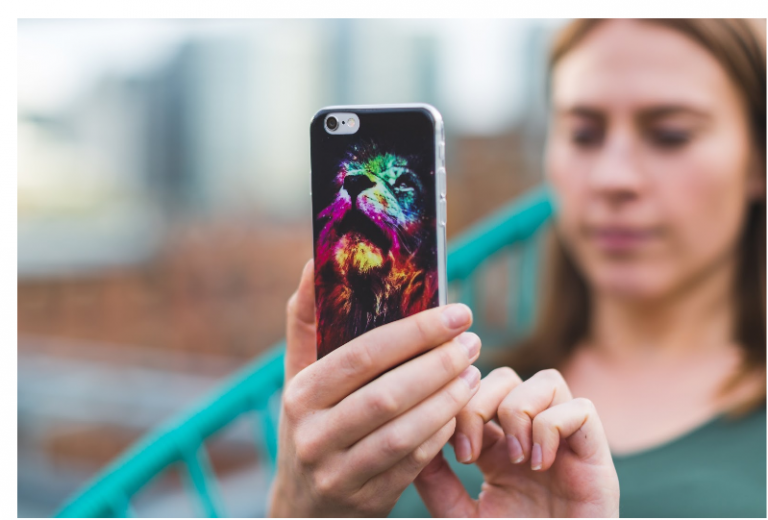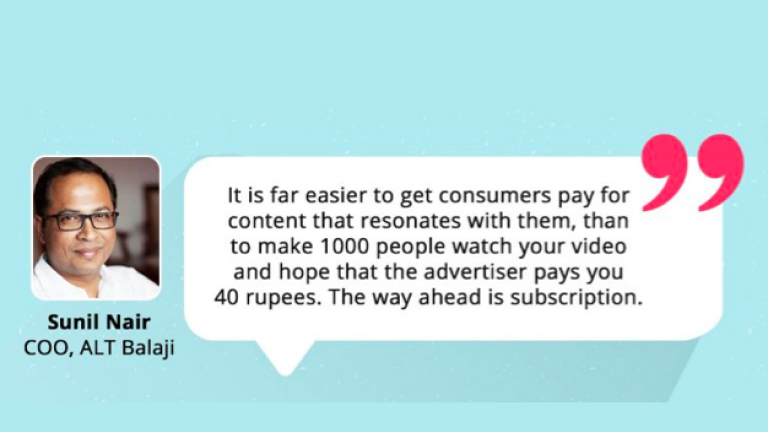In November 2017, Leonardo da Vinci’s last painting ‘Salvator Mundi’ was sold at an unbelievable price of $450 million, making it the most expensive painting in the world. Needless to say, not just the art community and the connoisseurs of art but the entire world was left astounded by the price of this sale.
So, why would someone pay such a huge fortune for a painting?
The answer? They are not buying the painting, they are making a statement. According to psychoanalysis done on the purchase, The individual who bought the painting is someone for whom the value of owning the world’s most expensive artwork outweighs literally everything else.
The above statement holds true for most luxury purchases made. We don’t pay for the product; we pay for the experience and the exclusivity and the aspiration associated with it. On the other hand, most days to day purchases are either need-based or impulsive, where price plays an important role.
For the same reason, the rules of customer engagement for the luxury retail sector are also different than the regular retail sector. For instance:
- Creating a perfect customer experience is the most critical factor while engaging with customers.
- Luxury brands seek exclusivity; they do not try to be everything to everyone.
- Brand communication across touch-points focuses on creating an aura, a mystique and appeal to the emotional or irrational brain.
Until a few years ago, for luxury brands, conventional wisdom used to be creating the best-in-class customer experiences in the store and not much importance was attributed to the e-commerce channels, online interactions or multi-branded retail websites. However, with the changing times, the way shoppers buy luxury products has also altered – digital experiences play a critical role. While the reason behind purchasing luxury items remain the same, the modes of purchase are changing. A 2019 Deloitte report showed that HENRYs (High-Earners-Not–Rich-Yet), one of the most preferred and ideal target audience for luxury brands, paid online with mobile devices or with debit/credit cards to earn reward points. Another report by luxe states that the overall global luxury market sales will increase from 313 billion USD (in 2016) to 471 USD in 2025. Of this total, the sales made via online channels will increase from 25 billion USD (in 2016) to 91 billion USD.
The trend to note here is that while the global sales value is increasing by about 65%, the online sales value is increasing by over 300%. Interestingly, the same report showed that at least 40% of all luxury purchases were influenced by consumers’ online experience.
In a few years, Millennials and Gen Z will account for almost 45% of all luxury purchases made. Further, today’s luxury buyers are more tech-savvy than ever. According to this ICSC report:
- Millennials and Gen Z shoppers will account for nearly 55% of the luxury retail market by 2025, becoming the primary target audience.
- The mindset of the Millenials and Gen Z audience is tech-oriented, which is why luxury brands are making huge digital investments or partnering with other e-commerce companies for online distribution.
- Today’s luxury product buyers are not just concerned with price and quality, but also look for premium and personalized experiences.
Luxury brands have taken note of this shift well in time and are using technology in their favor to interact with today’s consumers at the same wavelength. Here’s how luxury brands across the globe are playing the technology game right and things that brands across industries can learn from:
Changing with the times – creating compelling digital experiences
The baby-boomer audience is brand loyal and values traditional buying, but they have also adopted the online spending patterns of the younger generations. The millennials are anyway the digital-natives.
The common thread between both these audiences is the rise in the online time spent and the shift towards online buying. With users spending a huge amount of their digital time on smartphones more so on apps, mobile has become a critical aspect of engaging with the consumers. Luxury retail segments are leveraging this love of consumers for their smartphones and the accessibility of apps to connect with them and create experiences that matter for their customers. Here are some examples:
Using apps for customer engagement
Gucci
Most luxury brands use their apps with a focus on brand awareness and keeping in touch with their customers. Nearly all of them have features like a catalog with new collections, videos or photos from fashion shows, fashion tips and trends, etc. However, very few get creative and create experiences that are sticky, interactive and delightful; and Gucci, the renowned Italian fashion brand, did just that.
In 2017, during the holiday season, Gucci added new features to its mobile app to make the most of the spending-heavy season.
The app offered a holiday gift guide, featuring a catalog of products either selected or designed for the season. The virtual guide was embellished with designs and artwork by Spanish artist Ignasi Monreal, making up an interactive “Book of Gifts” with shoppable GIFs and a holiday countdown calendar.
Other new features in the app included a virtual reality video, which had a nine-day countdown clock, Gucci-branded stickers, and emojis that could be placed over photos taken in the app. A “Cabinet of Curiosities” feature, which was unlocked when shoppers at Gucci boutiques scan a mobile sticker in window displays. Once the users scan the stickers, a virtual world with spell bounding designs featuring the 2017 gifts selection of ready-to-wear apparel and accessories by Alessandro Michele, opened up.
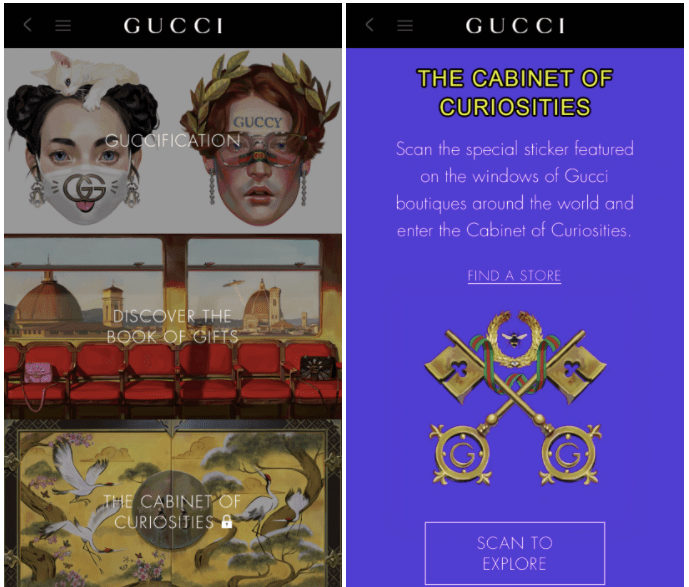
Image source
Chatbots for superior service
Luxury brands do not just have to create great brand experiences. They also have to make sure that their customers feel special and get exclusive attention from the brands. In such a scenario, Chatbots helps brands to deliver superior and personalized customer service as well. An example of a brand that leveraged the Chatbot technology to connect with their customers is:
Tommy Hilfiger
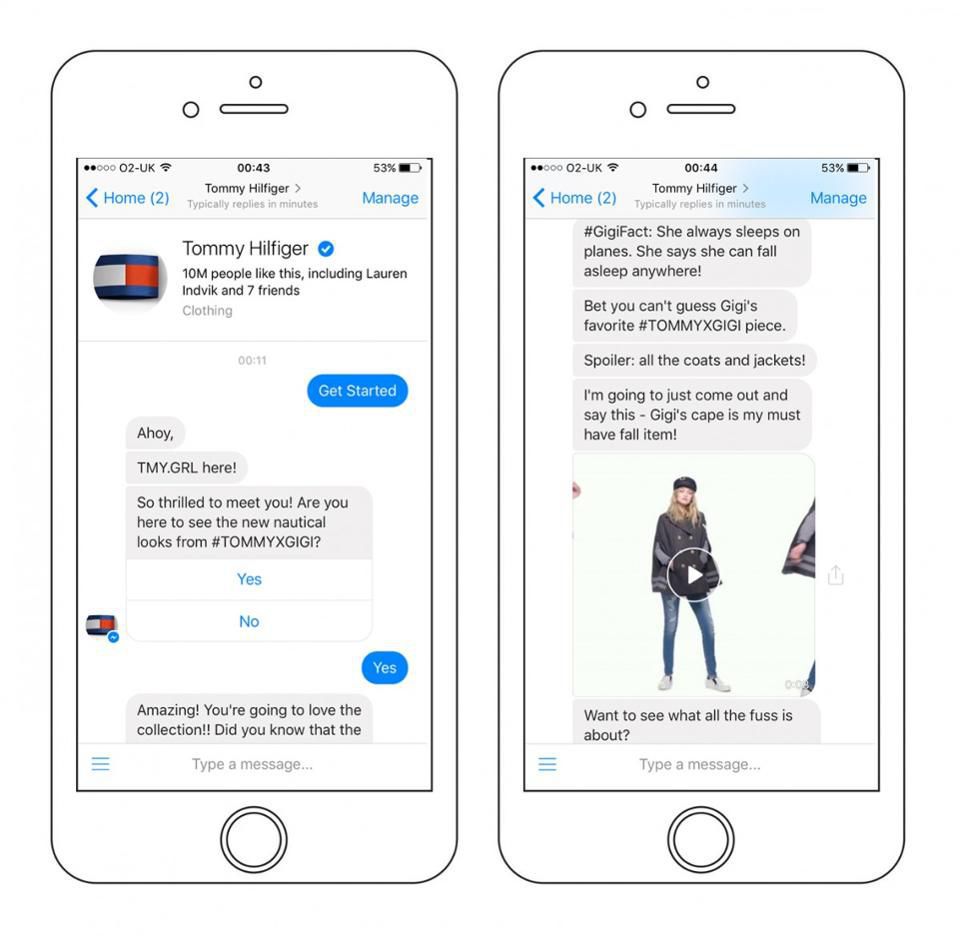
Image source
The brand introduced its chatbot during New York Fashion Week, with the aim to drive traffic to their website and create personalized customer experience around their new collection. The bot lets the user steer the conversation in a different direction, based on what the user wants by giving them an option to get fashion styling advice, browse the full collection, or take a look behind the scenes of the latest fashion show starring Gigi Hadid.
Using the power of social media to build the aspirational value
According to Oberlo, approximately 42% (approximately 3.2 billion social media users in the world) of the world’s population is on some form of social media, and spend an average of 2 hours and 22 minutes on one or more social media platforms every day. Facebook leads the race in 2019 with approximately 2.32 billion active users every month. 90% of all millennials are active on some form of social media, and 77.5% of all Gen X users are active on some form of social media, both being the main audience for luxury brands.
These staggering statistics have shifted the focus for luxury retail brands towards social media marketing. The same Oberlo report states that 54 % of people who browse social media platforms use it to research products, and consequently, 73% of marketers who implemented social media marketing said their efforts were effective.
Jean-Paul Gaultier
The French luxury fashion brand used the power of Twitter hashtags to create enough noise about the brand, without posting a single tweet. The brand created a Glory wall on its website which featured users’ names when they tweeted about the JPG collection tagging them. If more users mentioned the brand the higher up their names would appear on the wall. The handle with the most tweets at the end of a designated period earned a bottle of their favorite perfume.
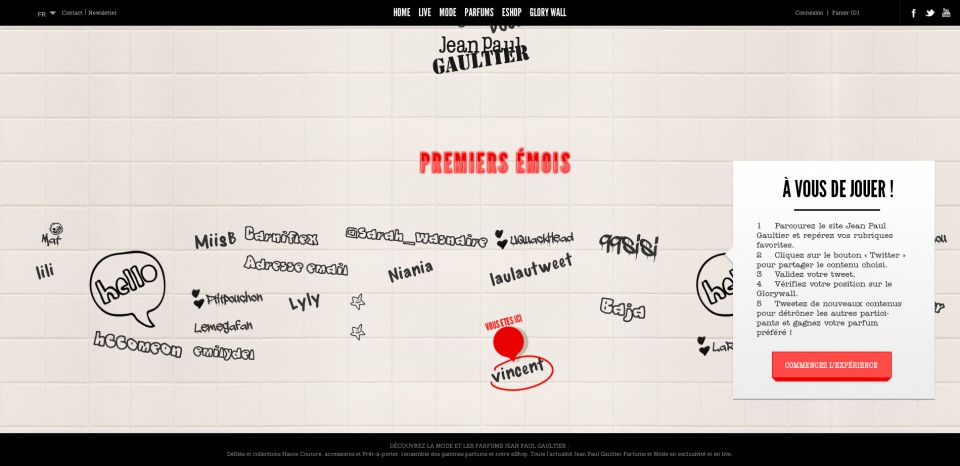
Image source
Tesla
Tesla went beyond getting popular influencers for their campaign; they asked their existing customers to share their ‘Tesla stories’ and used these stories to build a connection with their consumers. The brand’s website has a dedicated section for a customer testimonial. By doing this Tesla not just strengthened the brand loyalty of the existing customer base; it also raised the aspirational value of the brand.
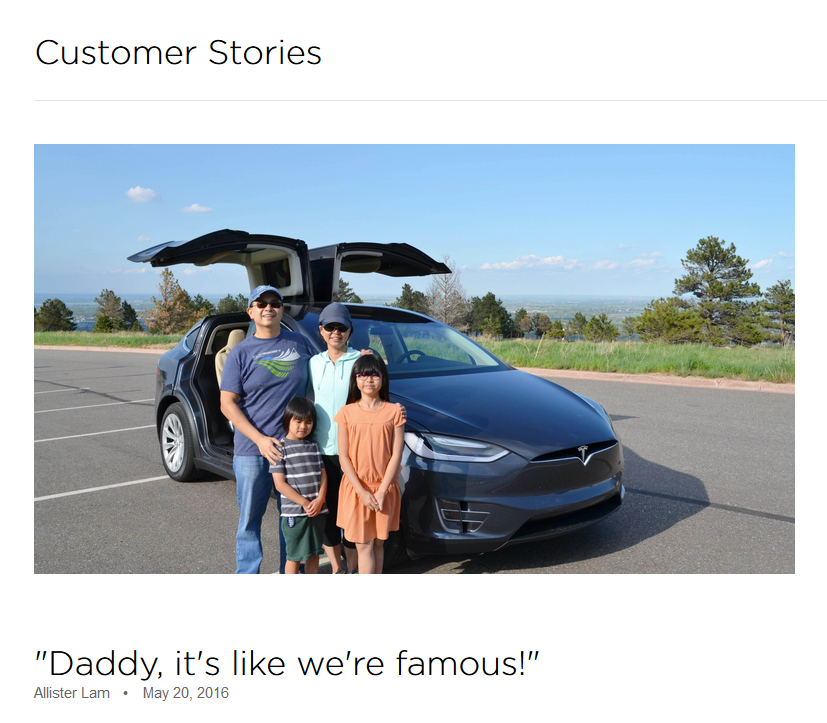
Image source
Using technology to augment offline experiences
One of the most critical aspects of luxury retail is the overall shopping experience that the consumer gets while buying a luxury product and it is more than just ease of transaction. It is about creating an unforgettable luxurious experience. Most luxury brands are known for providing the best-in-class ambiance inside their store for this very reason.
According to a Forbes report, the overall global market for VR and AR in specifically the retail sector will reach 1.6 billion US dollars by 2025. Luxury retail brands have a lot to benefit from implementing AR and VR into their customer experience strategy.
Here are some examples of the brands which are using technologies like Augmented Reality, Virtual Reality, mobile apps, etc. to create interesting in-store experiences.
Jaguar Land Rover
To enhance the luxury car experience, Jaguar Land Rover partnered with IBM to launch a new in-store virtual reality screen. The store enabled customers to experience the Jaguar or Land Rover model using a sensory-based technology. The consumer could control the environment around the experience through an iPad and Microsoft Kinect sensory technology and can choose the model, color, and features of a car. The experience also allowed consumers to get into the car to check out interior features with a 360-degree view, and to make real-time changes.
Dior
Christian Dior is blending technology and fashion design with the introduction of virtual reality headsets in a number of its boutiques, creating an immersive 3D experience with its collection and runway atmosphere. By rolling out ‘Dior Eyes’ in a number of its stores, Dior maintains its relevance and provides an elevated in-store experience. The headset is equipped with high-definition image resolution and integrated holophonic audio, creating a 3D immersion into the backstage world at a fashion show, including the sensation of 360° vision, letting visitors move about in the virtual universe.
Creating a sensory appeal
For the purchase of luxury brands, desire plays a key role. So luxury brands should aim to create that desire in their digital experiences too – be it offline or online. The regular display of merchandise which would be par for the course in an e-commerce app or a regular retail store will not apply here. One of the ways that luxury brands use to create desire and emotional connect is by appealing to the sensory stimulations of the shoppers, both for in-store and digital experiences.
When it comes to digital experiences, technologies like AR/VR see a lot of usages to appeal to the shoppers’ sense since they help brands to alter a consumer’s ambiance digitally. Some brands which are using sensory branding using digital technologies are:
Burberry
Burberry is one of the pioneers when it comes to using technology whether it is in-store or online. It has also done exemplary work when it comes to using these technologies to create sensory experiences in-store.
Burberry’s in its flagship store in London gave shoppers an experience of a theatre, with 500 speakers and 100 screens fitted throughout, which show original content created in-house at Burberry. In this store, customers can’t help but engage with all their senses with the brand.
The physical store aimed to replicate the user-friendly experience of the website and hence, they were not just engaged but were also effortlessly guided through the store through their intuitive navigation.
Prada x Prada the 360-degree VR experience platform launched by the brand takes consumers on a sensorial journey and an exploration of the world of Prada fragrances.
The VR-based app takes shoppers to an interactive digital journey. Through a transitional series of scenes and experiences – each one offering glimpses into the narrative and aesthetic codes of La Femme Prada and L’Homme Prada. Users are immersed in a three-dimensional space from which multiple experiences can be activated. The ensuing succession of textures, scents, sounds, and interactions evokes the multi-faceted nature of the fragrances and stimulates multiple senses of the user.
Luxury marketing has a code of its own. A key aspect of luxury brands is to create desire. It is anchored at tapping into the emotional, even irrational brand. We all have our emotional brain and rational brain playing a role in decision making. But almost always it is the emotional brain that leads our purchase decisions. Prof Baba Shiv of Stanford University said that:
‘’The rational brain is only good at rationalizing what the emotional brain has already decided.’’
We see this all the time with the purchase of fashion brands. In the case of luxury brand retailing, such irrational behavior is taken to an extreme where desire plays a key role.
Over the years Robosoft has partnered with leading luxury retailers including a leading brand of super-premium writing instruments and a German automobile manufacturer, to create state of the art digital experiences.
While working for these brands we have learned that luxury brands should aim to create the desire in their digital experiences too – be it a website, an iPad app or a mobile app. Some of the key elements of creating desire are mystique, sensory visual appeal, and the design approach. The design of such experiences should be simple wherein the content is always the main focus, celebrating each product.
Dean Gonsalves, our Vice President, Design, says:
‘’ Luxury brands should be mindful of quality vs quantity, control that urges to add everything in the guise of Product Visibility. There is indeed a stark difference between abundance and unnecessary choices.’’
Technology opens up the door of the luxury brands to create these elements for their audiences in an omni-channel environment.
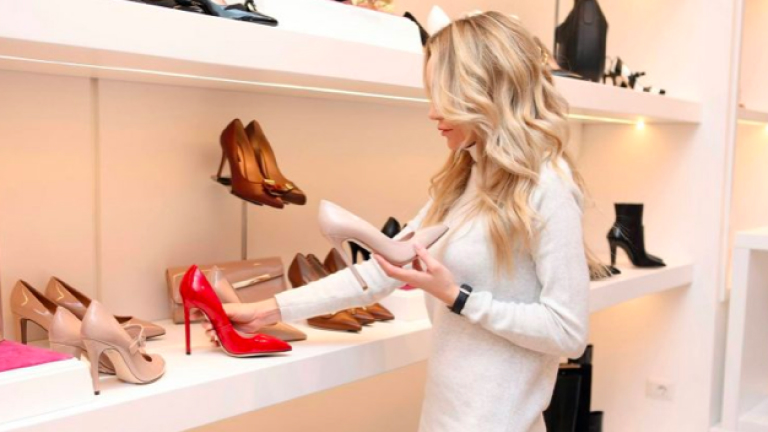
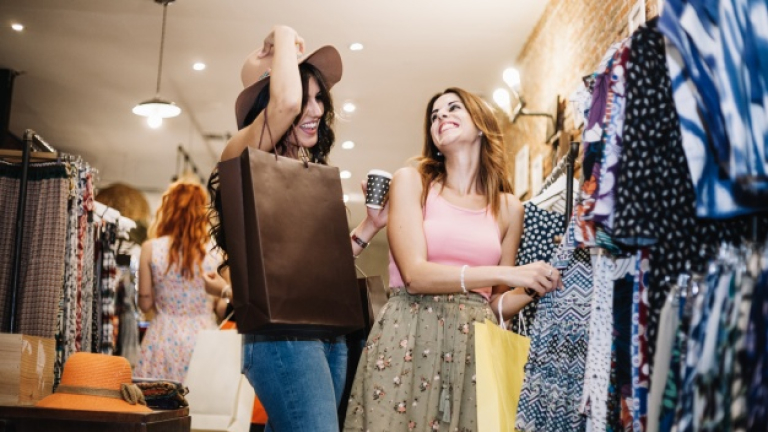
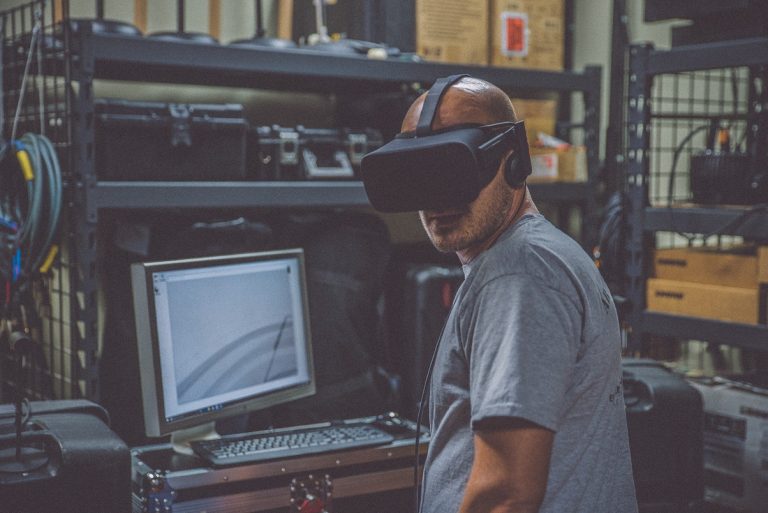 Image
Image 